As a rule, I like to eat the seasons —which in the summer mostly means simple, ripe, juicy pleasures. But the true joy of having a rule is it allows you to craft exceptions… One fun way to mix things up is to re-imagine an out-of-season dish. Here is the story of one such creation.
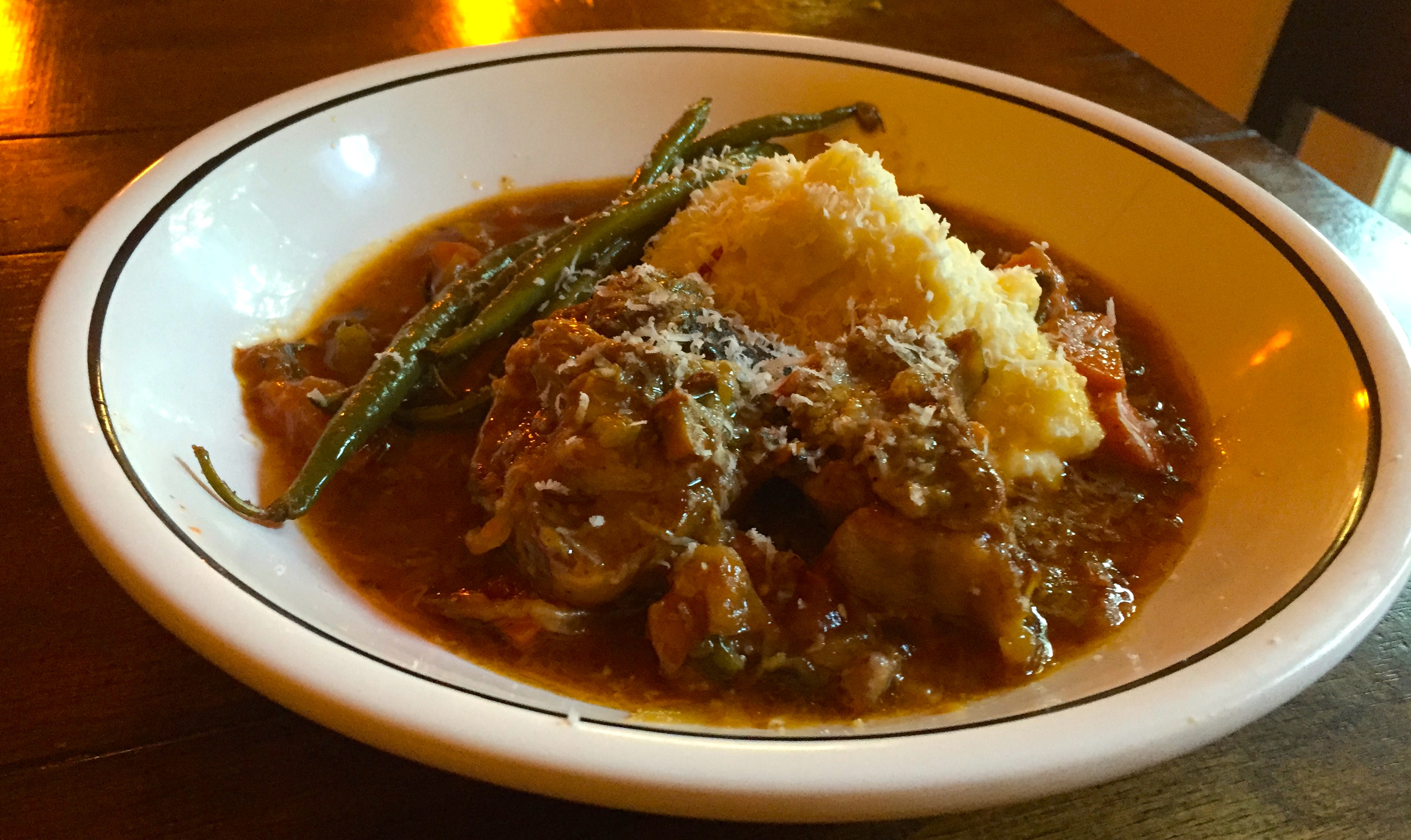
Osso buco, a classic Milanese dish of braised shanks in a hearty wine and vegetable based sauce, is a true favorite of the Convivial Boar —generally on a cool evening in the Fall (click “here” to read about venison osso buco). Now, let’s make it a summer dish by focusing on fresh garden vegetables and lightening the sauce.
Ingredients:
Small Pork Shanks (10 to 12 depending on size)
Vidalia Onion (2 medium onions sliced thin)
Carrots (four carrots sliced into bite-size pieces)
Celery (three stalks chopped)
Fresh Garden Tomatoes (I used one large Cherokee Purple Heirloom variety and a handful of grape tomatoes —so whatever you have handy —or can get your hands on)
Garlic (three or four cloves, minced)
Garden Peppers (I used four fresh habaneros but again, whatever you have handy and meets your spice threshold)
Baby Portobella Mushrooms (chopped finely)
Ale (I used one bottle of a lovely Southern Pecan Ale)
Chicken or Vegetable Broth
Plan:
In colder weather, I am fond of braising the whole shank portion for osso buco, but for this summer creation I opted for small cross-sections of the shank. I acquired mine from a local vendor at a farmer’s market, but most butcher shops have this cut of veal, pork, and sometimes lamb.
Season the shank generously with kosher salt and fresh cracked black pepper. Coat the shank in flour (this will help thicken the sauce).
Brown the shanks in a heavy skillet or pan using enough olive oil to cover the bottom of the pan (about five minutes per side). Brown them in batches to avoid overcrowding the pan. Once they are browned set them aside.
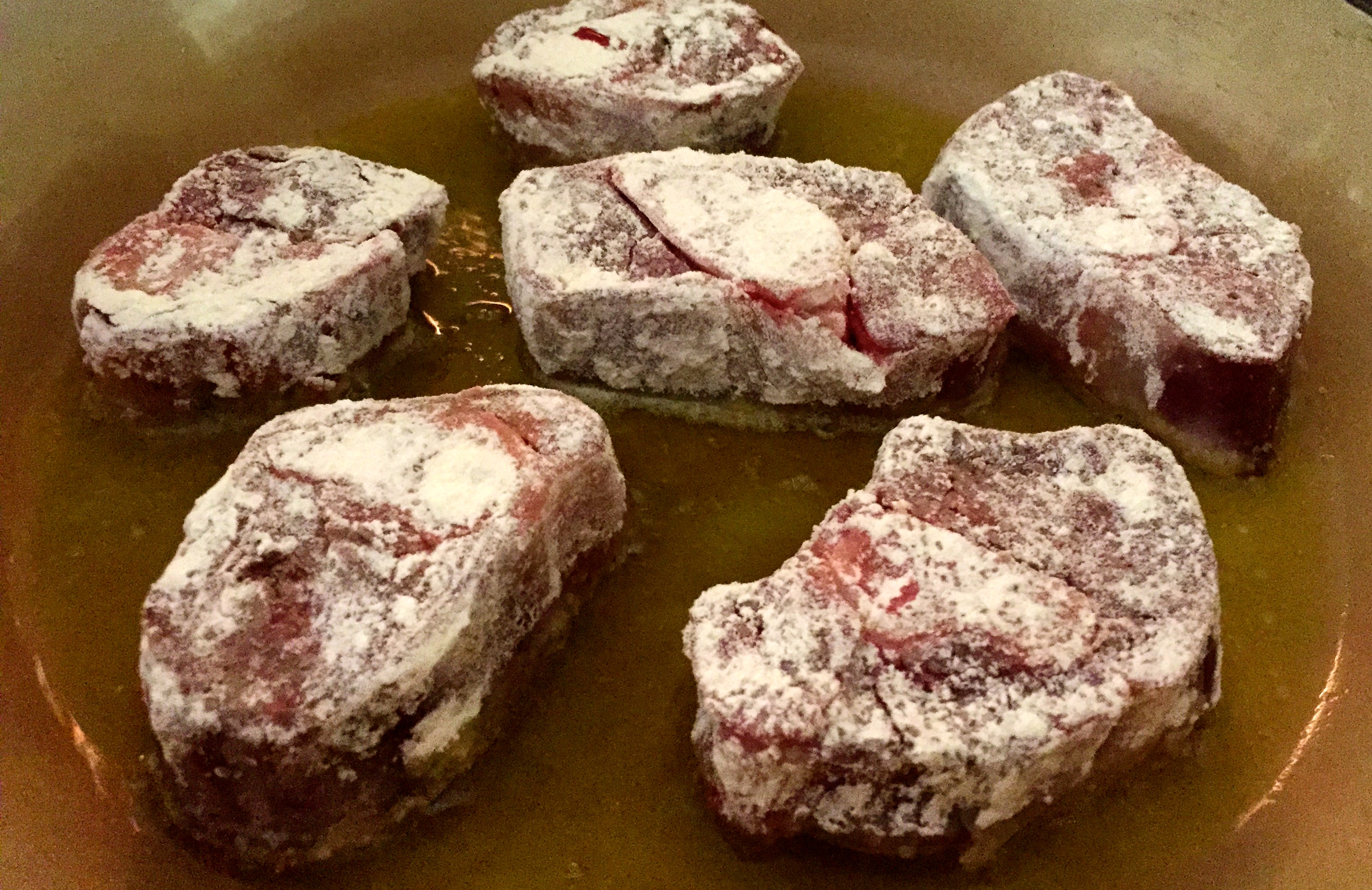
Add the onions, carrots, celery, garlic, and peppers to the pan. Saute them over medium heat until they begin to soften (15 to 20 minutes).
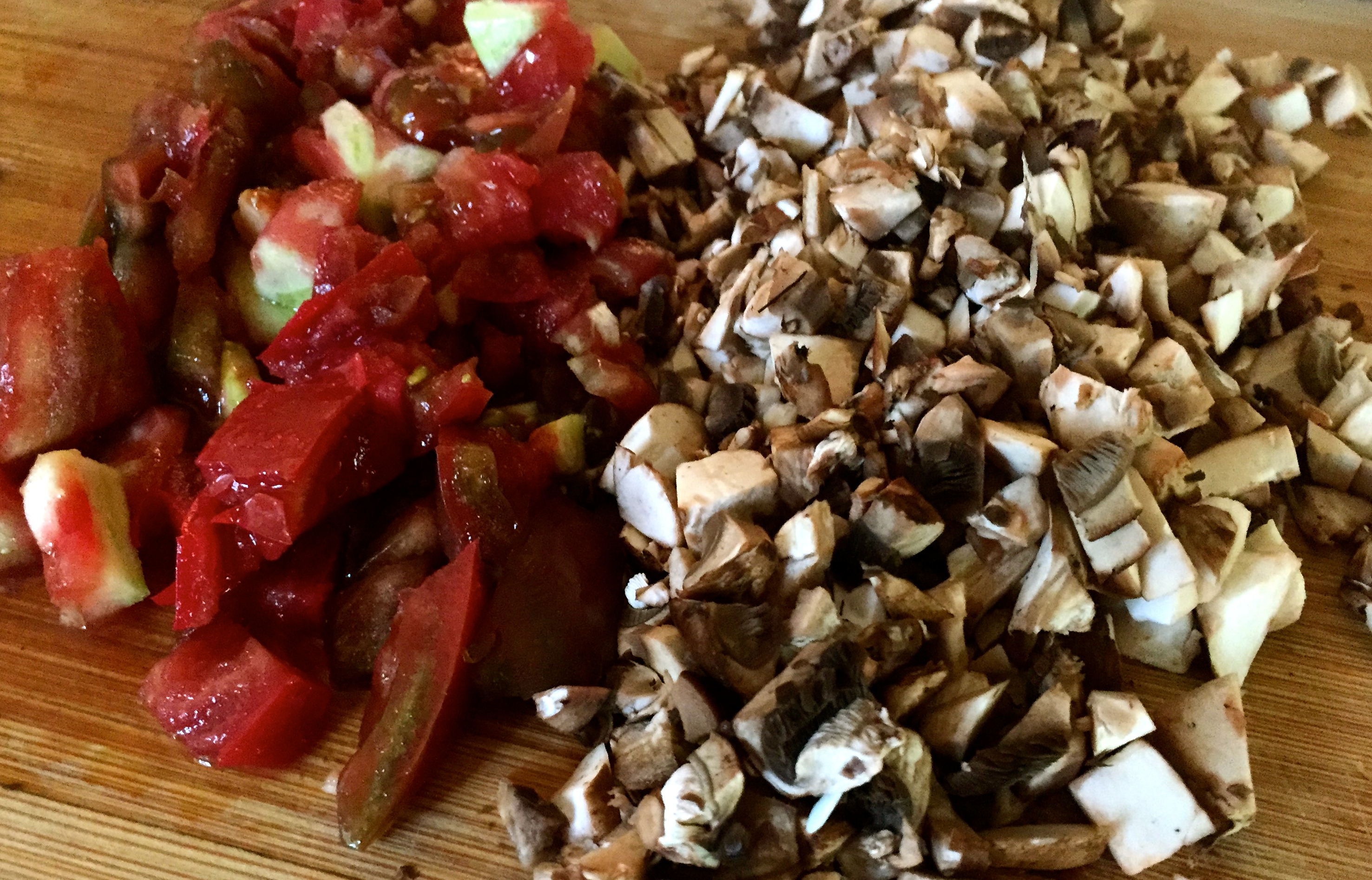
Next, stir the mushrooms and tomatoes into the pan. Cook for another two or three minutes. Stir in a couple of tablespoons of flour to the vegetable mixture to help thicken the sauce. Cook for another couple of minutes to lightly brown the flour.
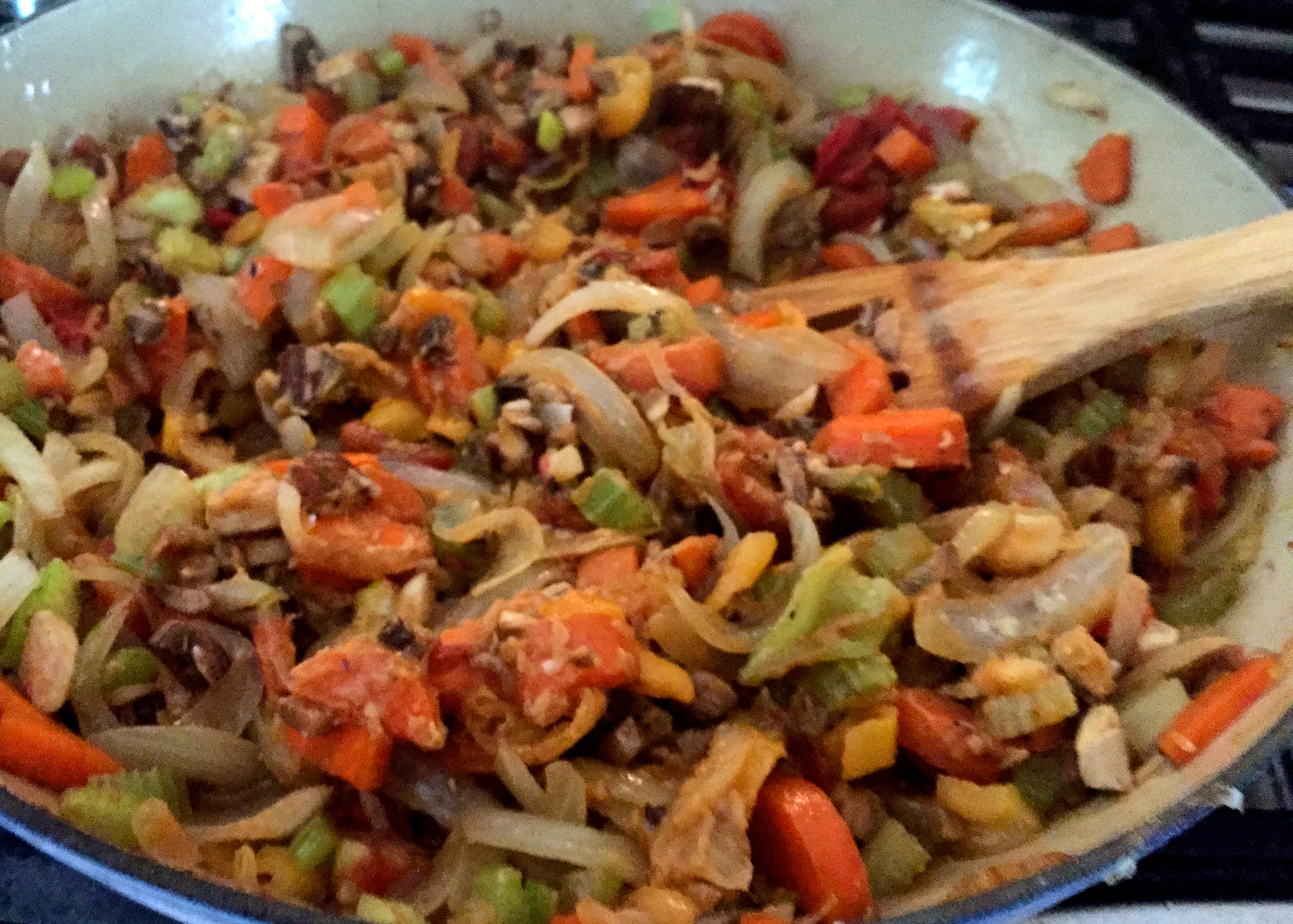
Deglaze the pan with the ale. (Note: in traditional osso buco red wine forms the basis of the sauce. Substituting ale makes for a lighter sauce, more fitting of summer).
Allow the liquid to come to a simmer and cook for a few minutes to cook off the alcohol. Be sure to scrape up all of the browned bits of goodness on the bottom of pan as you stir the vegetables.
Place the browned shanks back into the pan being sure to cover each with the vegetables and sauce. Add enough broth so that the shanks are completely immersed.
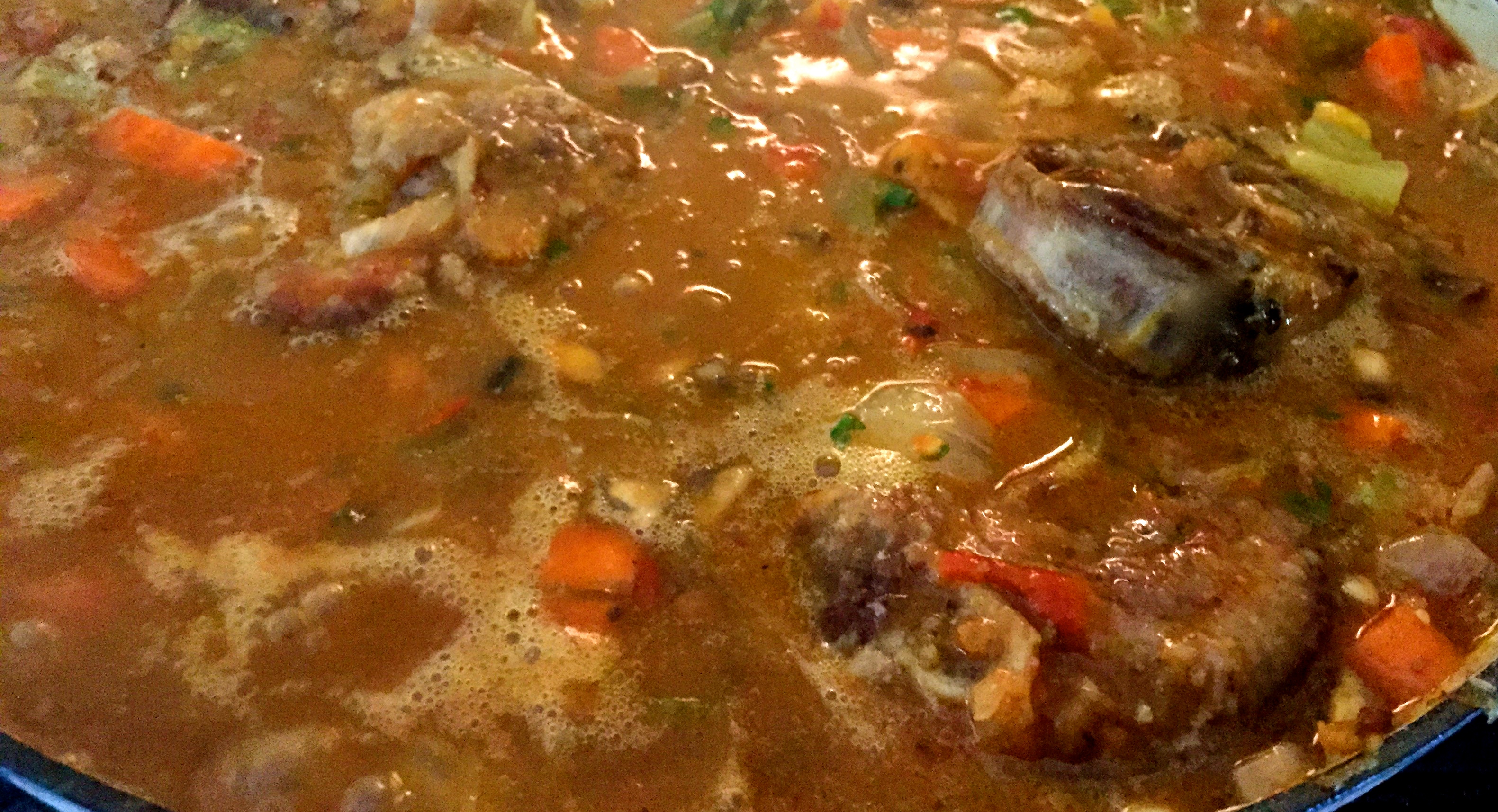
Bring the sauce back to a simmer on the stove top. Simmer for a few minutes (15 to 20) to allow the sauce to thicken a bit. Cover the pan and place in the oven at 250 degrees for at least three hours (I allowed mine to braise for about five hours).
If you desire the sauce to be thicker, remove the shanks from the sauce (note: you will need a slotted spoon to scoop them up as they will fall off the bone at this point) and bring the uncovered pan to a simmer on the stove top. Cook until the sauce is reduced to your desired thickness.
Place the shanks back into the pan and allow the dish to rest before serving. In the Fall, I serve osso buco piping hot, but in another nod to summer, I let this version cool almost to room temperature before serving.
Serve the osso buco over mashed potatoes, pasta or rice. (I went with roasted garlic-gouda-mashed-Yukon Gold potatoes —but that’s just me). Garnish with a fresh sautéed green vegetable, fresh grated parmesan cheese, and a crusty french bread to sop up the summer juices.
Re-imagine the seasons, my friend.
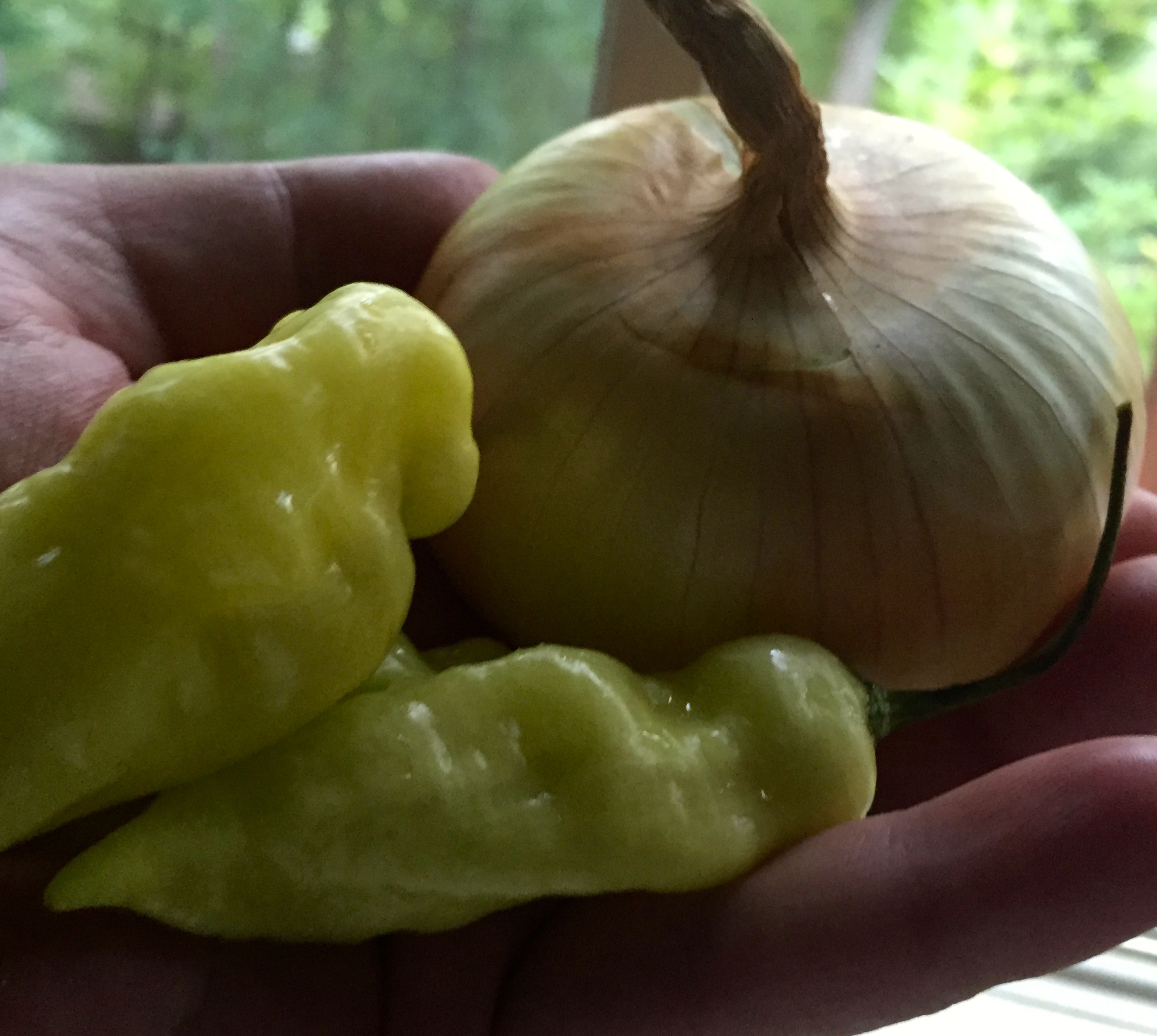
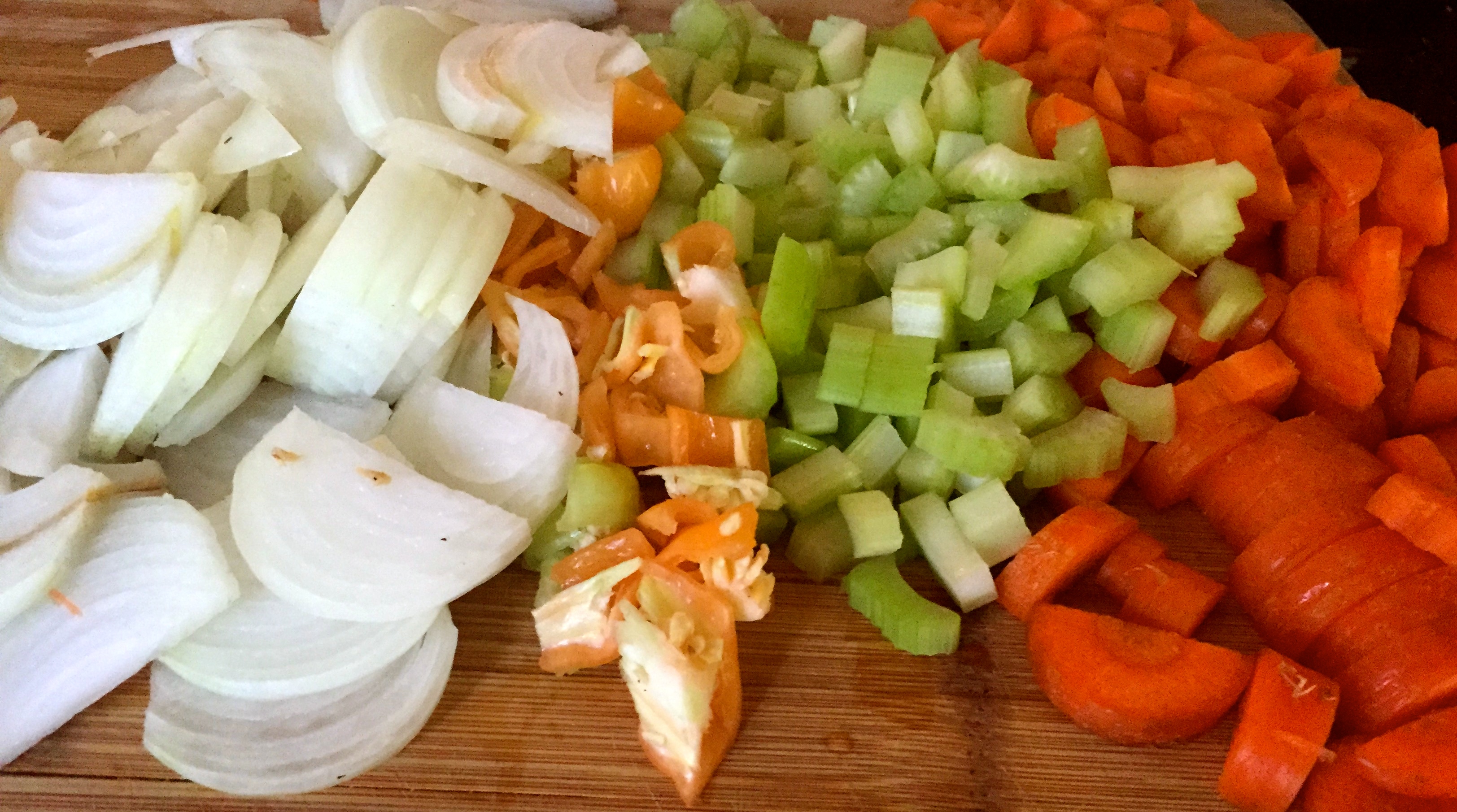
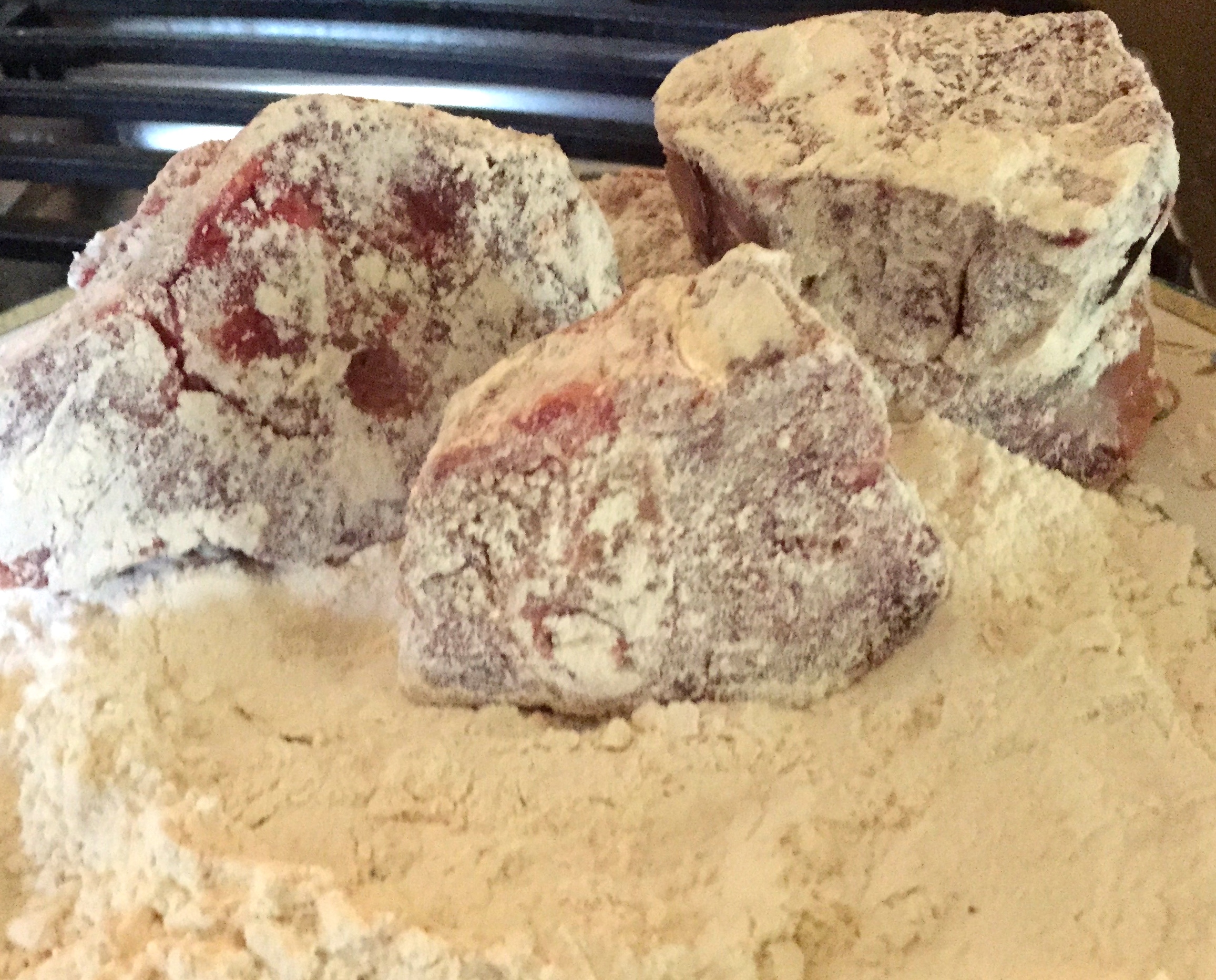
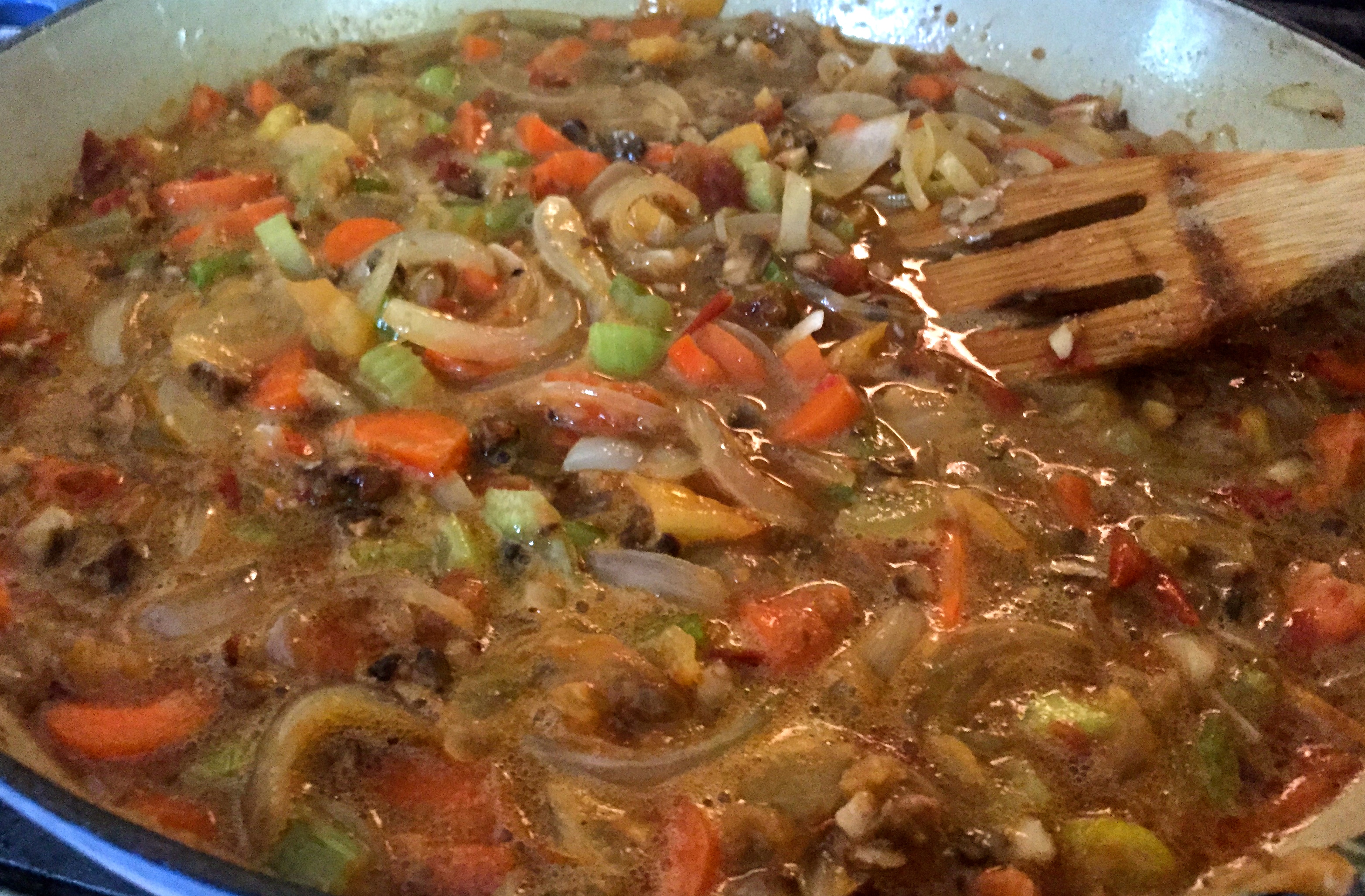

Leave a Reply